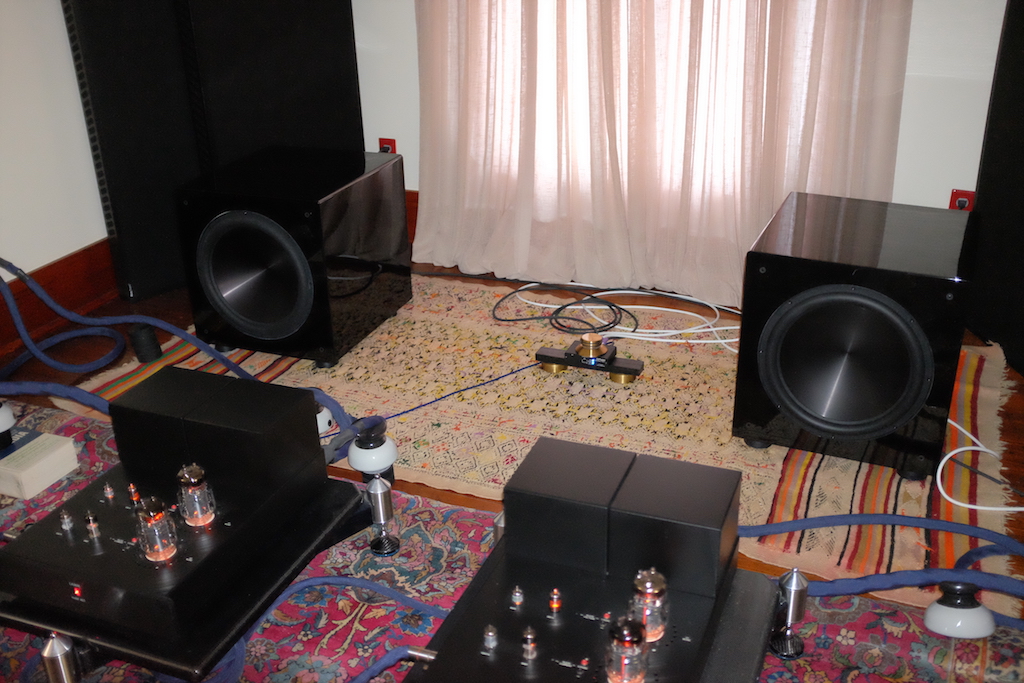I had a pair of Monarchy Audio se-100 Delux class A mono block amps. They powered a pair of Usher floor standers. Even at moderate volume the amps barely got warm. Amazing amps for $900 I bought as factory refurbs/upgraded. I once brought amps to my friends home to power a pair of Maggie’s. The amps definitely ran hotter to the touch but not extremely hot. So in my situation guess it depended on the speaker load
How hot is hot when moving from class a/b to to a or tubes?
I am considering moving from a class a/b Luxman L509x to a class a or tube amp.
I have never owned a class a or tube amp, so have no experience of living with one. My kids are hopefully old enough and wise enough not to burn themselves, but I do live in an already warm house with bifold doors leading to a south facing garden. There is no escaping the sun, despite having uv treated glass.
My room is roughly 9 meters by 12 open planed living space. Equipment is, Luxman L-509x integrated, Zu union 6 supreme, 99db sensitivity (this is why I am considering a lower powered tube I can barely turn the Luxman up) music is played roughly 6 hours a day, more on weekends
who here has moved from class a/b and d to class a with or without tubes. What were the differences of things like:
warming up time
additional heat to the home
Running in summer time
additional cost to run
any considerations I should make before purchasing something. I will try in my home, but will need to free up funds
- ...
- 41 posts total
@mpoll1 I have been running two 50 watt tube mono blocks. See my virtual system to get an idea of the size. To answer your questions. Ready to play as soon as I turn them on. No great warm up period required. After they have been running for a while, and at med loud load, the transformers are running at 110 degree Fahrenheit. My room is 13 x 21. After two hours of listen time the amps have raised the room temp by 3 - 5 degrees. The cost of running tubes vs SS a few dollars per months. My SS amps pull 3 amps on average and the tubes pull 6. I doubt you will notice a difference on the electric bill. |
Your questions: warming up time additional heat to the home Running in summer time additional cost to run
are trivial. The way I look at it, your first stop is assessing the quality of the power coming in. Are you in a single family dwelling? You wiring from the city line to the meter, or however it is configured, is usually the city's, but they will check it and can pull the meter. You want a clean, well done layout to your service panel and from corrosion at the meter connections to funky wiring, bad grounds, corrosion or some "hot spot" on the panel, you should have it checked. Then look at how you are feeding the system- dedicated lines? That's a sort of minimum in my estimation. The cost of tubes is the tubes. Sourcing them is another matter. Additional cost to my electrical bill: have no idea. I'm in Texas, it gets to be 110F here in the summer; there are grid warnings, and I usually don't play the system then, just because the grid is less "stable" for lack of a better word. I installed a 10kva Iso Transformer for the system that outputs 4 gauge to a more local service panel, where 4 20 amp dedicated runs of 10 gauge are installed. It is normally a very quiet system. Warm up time- 45 minutes for the amps; 3 sides for the cartridge. |
- 41 posts total


